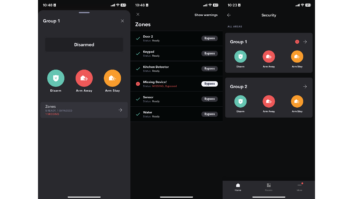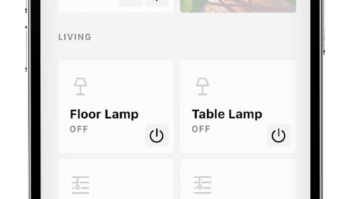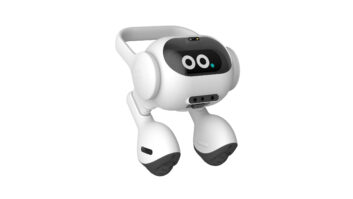Nearly a year after its inception, the Internet Home Alliance has made the leap from market research to market penetration with its recently launched New Power pilot program in Texas. Just one of many pilots planned to infuse consumers with the benefits (and projected cost-savings) of the connected home, the New Power pilot features three of the Alliance’s principal members, Sears Roebuck & Co., Coactive Networks and The New Power Company.
The Internet Home Alliance is a non-profit association featuring an A-list tier of technology and consumer companies which include Sun Microsystems, Panasonic, Best Buy, Honeywell, CompUSA, General Motors, emWare and Gatespace. Akin to a behemoth think-tank, the Allaince’s mission is to research, market and implement Internet technology solutions for the home.
Initially criticized by some for focusing too much on research and not enough on action, the Alliance has entered the “go” mode with the New Power pilot program. “When it was created, it was seen as a marketing effort as opposed to technology developer. We’ve seen plenty of the consortiums with the aim of creating a new standard for home networking,” said Kurt Scherf, vice president of research at Parks Associates. “What we hadn’t seen was that they want people to leave their branding hats behind. It’s not about individual brands but about how the rising tide floats all boats.”
Scherf continued, “The IHA wants to pull together its massive marketing muscle to educate consumers about the benefits of a networked home. They’ve spent a great deal of time internally figuring out how they are going to work and how to structure the alliance itself to foster these goals. They are now shifting away from pure marketing efforts to these pilot programs as a way to educate consumers.”
Launched in June 2001, the Internet Home Alliance’s New Power pilot program has installed Internet-enabled, thermostat control systems in 500 Houston, Texas households. Representing a spectrum of demographic diversity, everything from dual-income, no-children households to multiple children/multiple air conditioners households, the pilot serves as a test-bed for consumer reactions to having more control over their power usage.
“The purpose of this pilot was to get out there and understand how consumers interface with the biggest energy user in the home, the air conditioner,” said Tim Vail, vice president of energy technology solutions at the New Power Company. “Consumers in the South are very focused on their air conditioning, particularly in Texas where 40 percent of a consumer’s annual energy is through an air conditioning system, even though it runs about four months a year.”
In an example of Alliance member convergence, Sears did the installation package, which included a Coactive gateway, a power measurement node and a remotely controlled thermostat. Participants were then given a user ID and password enabling them to access their system, via a standard wire Internet browser, to check settings, manage and program it through the New Power website (www.newpowerconnections.com), while away from home.
“Unlike a programmable system in your house that would take some sort of rocket scientist to figure out, this pilot is ‘drop and drag’ and very easy to understand,” Vail said. It also features wireless functionality and can be accessed through wireless devices such as a Palm VII or web-enabled phone.
The Coactive gateway installation required no household rewiring and original thermostats were left intact. Also, the gateway box is unobtrusiveand “fits under the couch,” Vail said. It is not a “dumb” device and features enough intelligence to enable the local network to operate certain devices with or without an Internet connection. It can also “reach out” to the Internet through a variety of means, with broadband being the most desirable. There is a 50/50 split between dial-up and broadband in the Houston pilot program.
As far as practical applications for the consumer, Vail predicts that getting rid of the “vacation hothouse surprise” in providing remote control access to home thermostats will be a crowd-pleaser. “During the summer, when you leave town in the southern states, you set your air conditioner to 90 or 85 degrees. When you return, you have a four-hour period where your house is 90 degrees. Our system gives the consumer the ability to start up their air conditioner before coming home.” Dual income families, who rarely live by a set schedule, can benefit as well by making temperature adjustments prior to returning home.
Energy savings for pilot participants is estimated to be between 10-15 percent, according to Vail. Also, 30 percent of the households are part of a pilot “subset” called the Joint Energy Management program (JEM), which reduces energy usage at peak times. For example, JEM thermostats could be programmed to move six degrees forward during a 2-4 hour window of peak usage, enabling New Power to purchase less power, with the cost savings shared with consumers. JEM participants have the option to override but could also realize significant cost saving s if they stay with the programming according to Vail. “If we can get consumers to be interested in this, there’s an opportunity to save quite a bit of money for them,” he said. The New Power pilot program is set to run through October 2001. If the consumer response is very positive, they may decide to continue it. If not, Sears will remove the installations without any cost to the participants. If all goes well, delivering products to the consumer space, based on this pilot’s results, could happen as early as next summer. “We’re going to take what we learned and design new products around them,” Vail said.
According to Kristine Stewart, Cisco Systems’ director of market development, consumer line of business, all the principal members will share in a detailed report of the New Pilot program. Associate members (those who paid $10,000 to join, as opposed to, say, $2 million) will get a summary of the findings. The first results will start becoming available in September and a final in-depth report is expected by November or December.
According to Stewart, Sears and Cisco were the two companies that started the Alliance, of which she played a major role in organizing. She believes their high-profile roster of companies and brands, research and pilot programs plus their combined marketing expertise will begin to drive this market forward. “It’s all about the acceleration of market we all know is coming, and wouldn’t we like it to get here a bit more quickly?” she asked.
All pilot programs are directed by original founding members, who can also utilize some of the dollars they spent to join the Alliance for pilot funding. These members are referred to as the “champion” of that particular pilot and can bring in associates they feel are appropriate. However, too many participants could be as unwieldy as too many cooks. “You have to figure out some number that’s appropriate,” Stewart said.
As far as member participation in upcoming pilots, Stewart offers that they recently held an all-member meeting where associates were given the opportunity to participate. “We presented all the pilots so associates had a chance to say, ‘I might have something that could fit here.’” Details are sketchy but some pilot “ideas” include wireless networking, entertainment on demand, structured wiring security and home backup applications.
Despite any great leap forward the Internet Home Alliance can offer in technology solutions, it won’t mean much to the average consumer until the installer base is proficient in implementing them in the home. The Alliance considers itself collaborative rather than competitive in this area. “The IHA has reached out to CEDIA and they are in support of the Alliance,” Vail said. “There’s lots of boutique firms offering customized solutions, but if you really want to take it nationwide and create energy management solution that is Internet based, and in 1 million U.S. homes, it will require a strong nationwide installer skill base.”
If the New Power pilot is any example, custom installers will be requiring a new series of technical skills. “One of the things we learned with our pilot was that it takes a special skill set–something in-between a typical installer and a computer technician,” Vail said. “The Alliance is spending the money to create certification and training programs as an indication of how we want to benefit the industry as a whole. If you can get these guys trained, you’ll see a great many companies coming in and offering solutions.”
Stewart concurs. “It’s about channel integration,” she said. “A big part of the market development is to have someone go and deliver it later. Even if the product is self-installable, it’s best to have a local installer do it.” Though plans for how these training programs would be organized and implemented is not available at press time, Stewart also floats the possibility of a structured certificate program complete with “badged” installers carrying credentials stating that they are trained in these new technologies.
“Cisco is really pleased with how the Internet Home Alliance has gone,” Stewart said. “For consumers, we’re at the beginning of the early adopter. When we get a full portfolio of services with definable applications for people, that’s when they’ll go down to their local retailer and say ‘I’ve tried this service, what’s the next thing we can do?’”
Karen Jones is freelance writer in Garden City, New York







